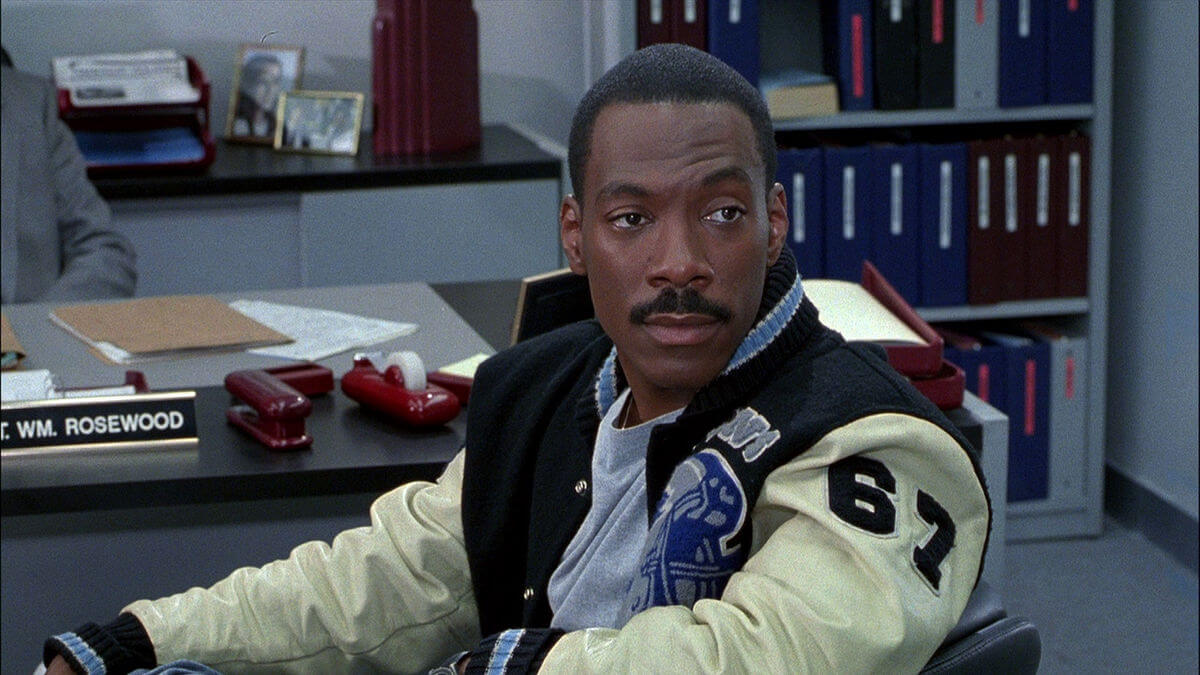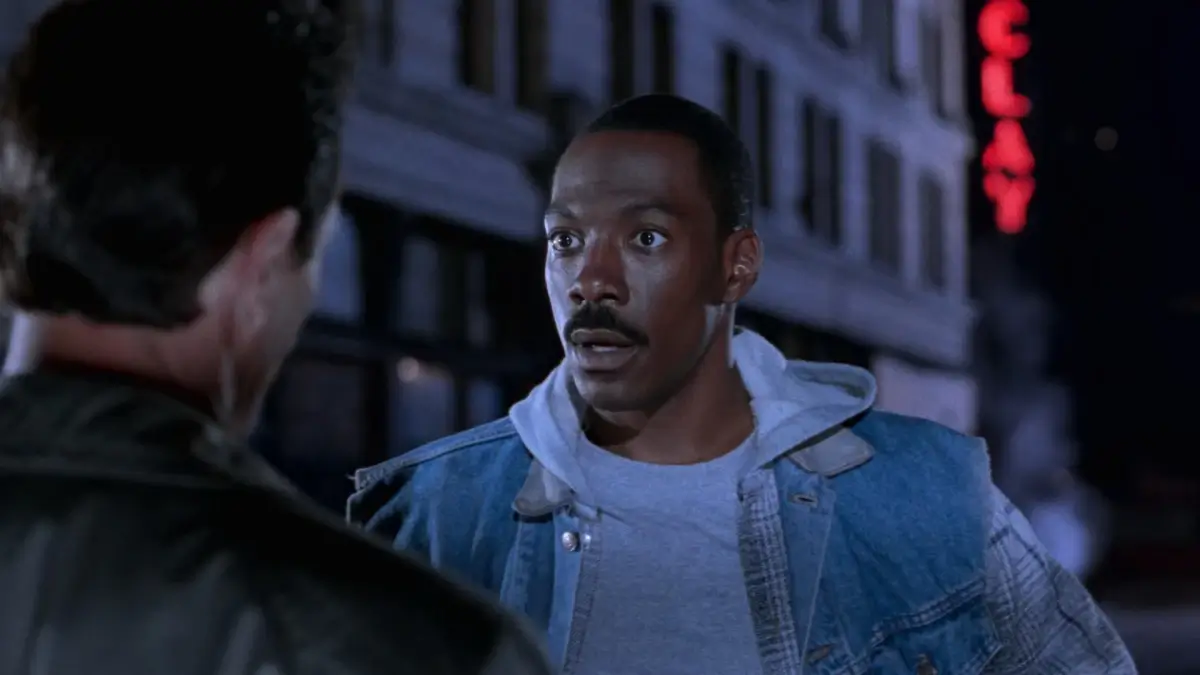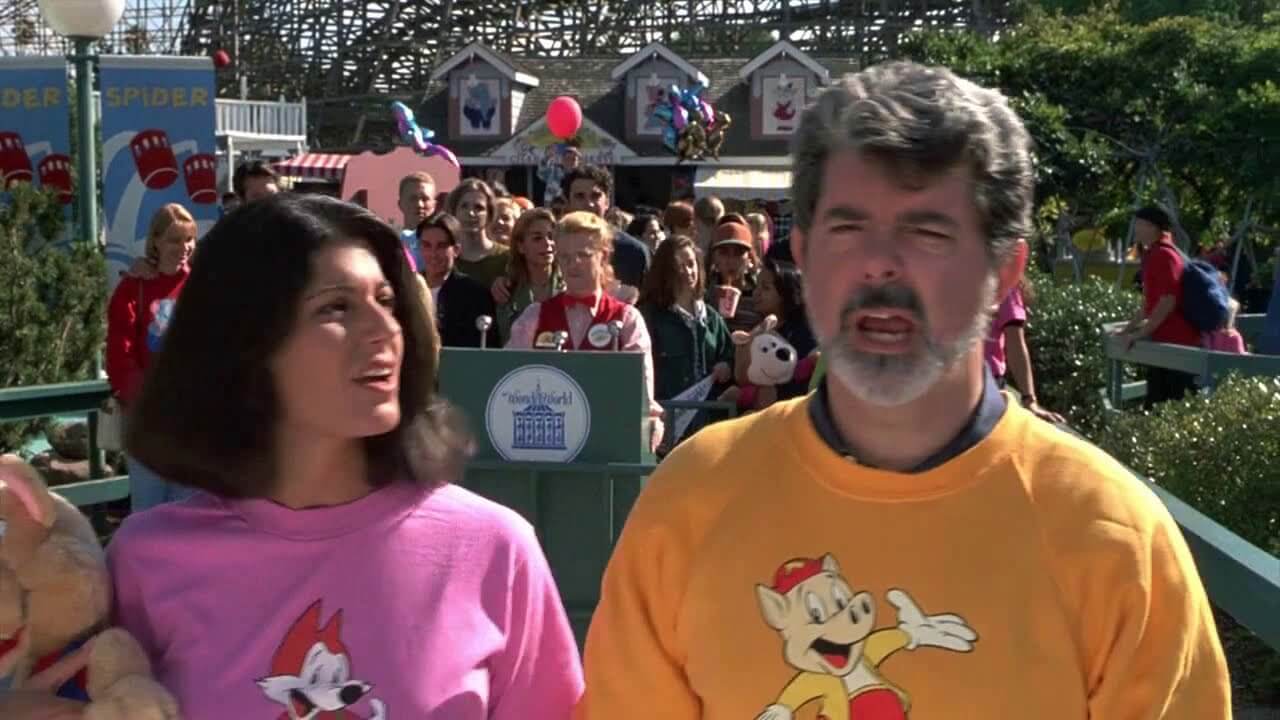BEVERLY HILLS COP III: The Weakest Link in the Series

The second part of “Beverly Hills Cop,” although rated somewhat lower than the original, also took cinemas by storm and was a considerable success. It seemed, therefore, that the creation of another installment in the series was only a matter of time. However, the main obstacle was Eddie Murphy himself, who didn’t want to reprise his role as Axel Foley because, as he put it, everything about this character had already been said. The future of the cunning Detroit cop seemed uncertain.
Yet, in the following decade, after making the sequel to “48 Hrs.,” “The Distinguished Gentleman,” and “Boomerang,” Murphy felt his star was fading. He decided, contrary to his earlier statements, to return to his most famous character. Over the years, several scripts were written. One involved Foley, Rosewood, and Taggart rescuing Captain Bogomil, held hostage by terrorists along with other captives at a police convention. Another idea was to send Axel to Scotland, partnering with Sean Connery, or to London, where he would solve a friend’s murder with John Cleese. There was also a variation of “Die Hard,” set in an amusement park. This last idea became the basis for Steven E. de Souza’s screenplay.

Constant revisions caused the budget to balloon, time passed, and production stalled. Finally, in September 1993, the crew started filming. John Landis, known for great comedies of the 1980s (“Spies Like Us,” “The Blues Brothers”), and who had already worked with Murphy on “Trading Places” and “Coming to America,” was the director. Despite a major falling out during the making of “Coming to America,” Landis and Murphy managed to reconcile, and the third “Beverly Hills Cop” entered production.
The plot is again a retread of the first part. This time, during a police operation, Axel’s commander, Inspector Todd (Gilbert R. Hill), is shot dead. The trail leads to Beverly Hills, where criminals are running a shady business in an amusement park. With the help of Billy Rosewood (Judge Reinhold), Foley decides to stop their nefarious activities and seek justice.
The director later admitted that he considered the script not very good, but hoped Murphy would make it funnier and that it would ultimately turn out to be a good film. Additionally, the earlier mentioned delays meant many people involved in the previous parts didn’t return, including producers Jerry Bruckheimer and Don Simpson, and composer Harold Faltermeyer. The absence of John Ashton as Taggart is especially felt. The actor wanted to appear, but had other commitments. Captain Bogomil (Ronny Cox) is also missing; he was offered a role but didn’t like the script. Axel’s friend from Detroit, Jeffrey (Paul Reiser), is also absent. However, Bronson Pinchot was persuaded to return as Serge, which is one of the film’s positives.

The third installment of the series is the weakest of the trilogy. Mainly due to the inexplicable and unnecessary change in Axel’s character. Murphy partly shares the blame, believing Foley, now older, shouldn’t be so silly. Consequently, the film lacks the character’s improvisational scenes, which were highlights of the previous films. The absence of Taggart is strongly felt, as his replacement, Jon Flint (Hector Elizondo), does his best but lacks the chemistry with Reinhold that Ashton had. The script also contains many questionable decisions, such as the introduction of the futuristic “Annihilator 2000” weapon (although it ultimately serves a comedic purpose), or the carousel sequence intended to show Foley’s heroism but doesn’t fit his character. Finally, despite the extensive work on the script, the reason for Axel’s return to Beverly Hills is exactly the same for the third time. The film also suffers from ridiculous moments during shootouts, where Axel hides behind a wooden bench or just ducks, while villains shoot at him with machine guns and miss. Even by genre standards, it’s too much. Years later, Murphy admitted he doesn’t care for this installment. Unlike the previous films, a romantic subplot was introduced, but the film wouldn’t lose anything without it.
Despite all these flaws and the clear change in character, I can’t entirely write off this film. Maybe it’s nostalgia speaking, but I still enjoy watching it. Surprisingly, the third “Beverly Hills Cop” has a decent pace and some genuinely good gags: the mechanics’ dance at the beginning, Axel’s dance while escaping, the awards gala sequence, the “theft” of a car outside an exclusive restaurant, and some individual scenes. John Landis also used his trademark technique of casting well-known directors in small roles, including George Lucas.

The film was a financial and artistic failure, burying plans for Axel’s return to the screen for a long time. Over the years, it has become much less enjoyable than its predecessors. It also lacks the 1980s vibe for obvious reasons. Many things didn’t work in this film, but I still enjoy it as a “guilty pleasure,” while acknowledging it as the weakest link in the series.
Written by Piotr Zymelka

